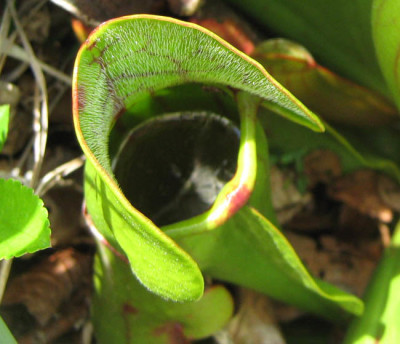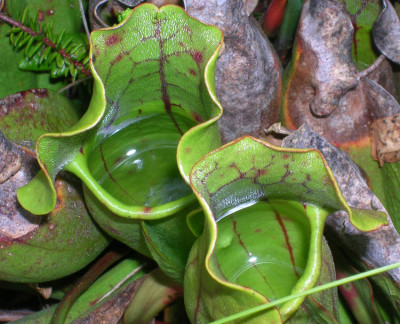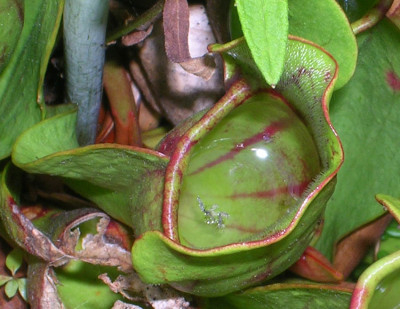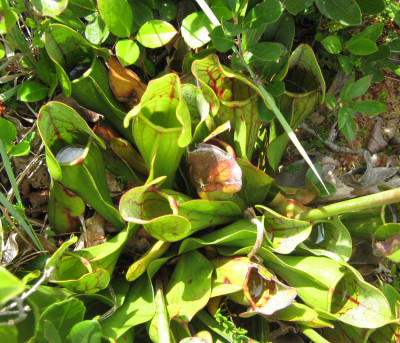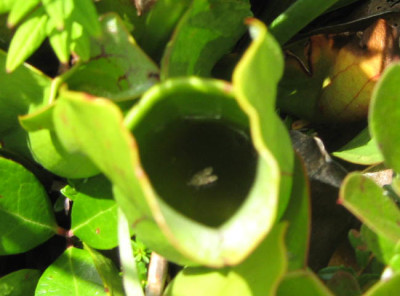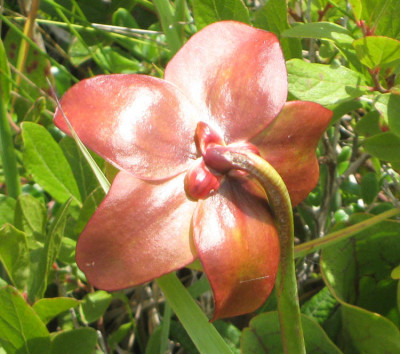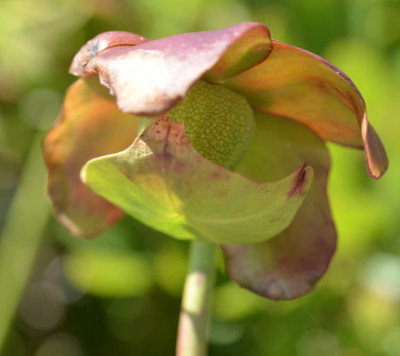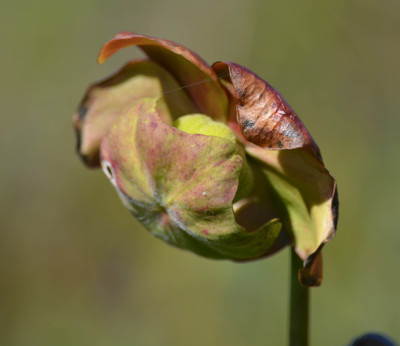You’ve probably heard that the Pitcher Plant can secrete enzymes into its water-filled leaves to help it to “digest” trapped insects so that it can absorb nutrients from them. What I hadn’t learned about before writing this, is that there is another force at work. Insects living in the pitchers also help “digest” the captured insects.
Notice the hairs on this Pitcher Plant’s leaf. The hair-like bristles point down into the curled leaf, encouraging insects to slip in, and discouraging them from getting a grip to climb back up and out.
Did You Know the Some Insects Actually Live Inside the Pitcher Plants Watery Traps?
In the Ecological Society of America journal Ecology, Stephen Heard reported on his experiments with two insects whose larvae live *inside* the pitchers of Pitcher Plants. One insect is a type of midge, Metriocnemus knabi, and the other is a mosquito, Wyeomyia smithi.
Both types of larvae feed on the other insects captured by the Pitcher Plant! The midge larvae tend to eat the “decaying invertebrate carcasses” and the mosquito larvae “filter feed on particles derived from the decaying matter.” The mosquitoes also feed on bacteria which live in the pitchers. The bacteria feed on the broken down bits of decaying insects, too.
According to the University of Guelph BioBus website, the Wyeomyia smithii mosquito larvae “feeds on the deteriorating pieces of insects caught in the leaves [and] it also feeds on the population of rotifers, protozoans, midges and bacteria that dwell within the miniature ecosystem.”
The mosquito larvae get into the pitchers when the adult mosquitoes lay their eggs in the pitcher’s water.
The insects living in the Pitcher Plants have a commensal relationship with the plant. The insects benefit but the plants do not directly benefit.
What does benefit the plant is the bacteria that feed on the remnants left by the midges. The bacteria, along with other micro-organisms, break down the dead insects into components that can be absorbed by the plant.
What Nutrients are Pitcher Plants Trying to Get?
According to an article written by Kent McFarland on the Northern Woodlands website, Pitcher Plants are trying to get access to nitrogen. Bog soils are very low in nitrogen.
According to the article, when researchers from Harvard and the University of Vermont increased the amount of nitrogen available to Pitcher Plants within one growing season the plants stopped producing pitcher-shaped leaves and only produced the flat leaves used for photosynthesis.
It seems odd to think that a plant that kills and eats insects also serves a purpose as a nursery for other baby insects. It makes finding a Northern Pitcher Plant even more interesting, though.
Related Reading
- Where’s Can I Find Pitcher Plants and Sundews Easily in Nova Scotia?
- The Secrets of Sundews
Join In
Have you ever watched an insect trying to escape from a Pitcher Plant? Please share your experiences with a comment.

